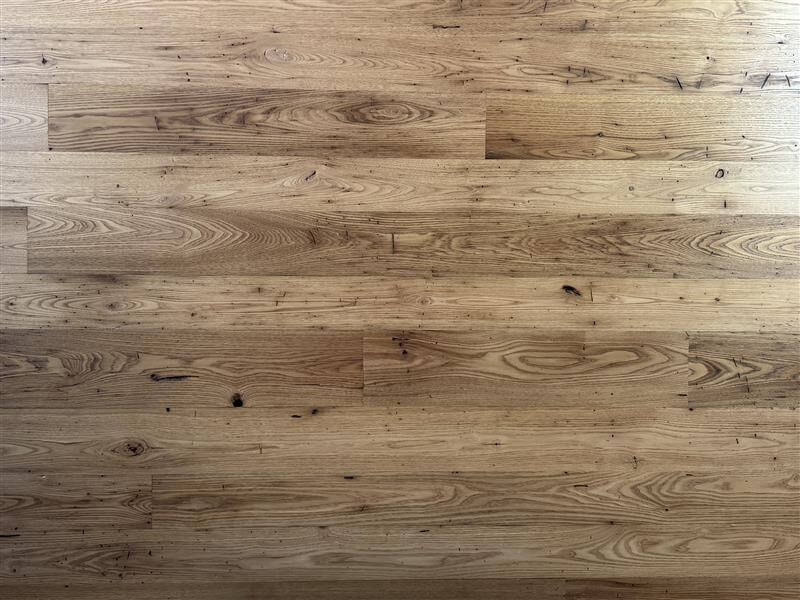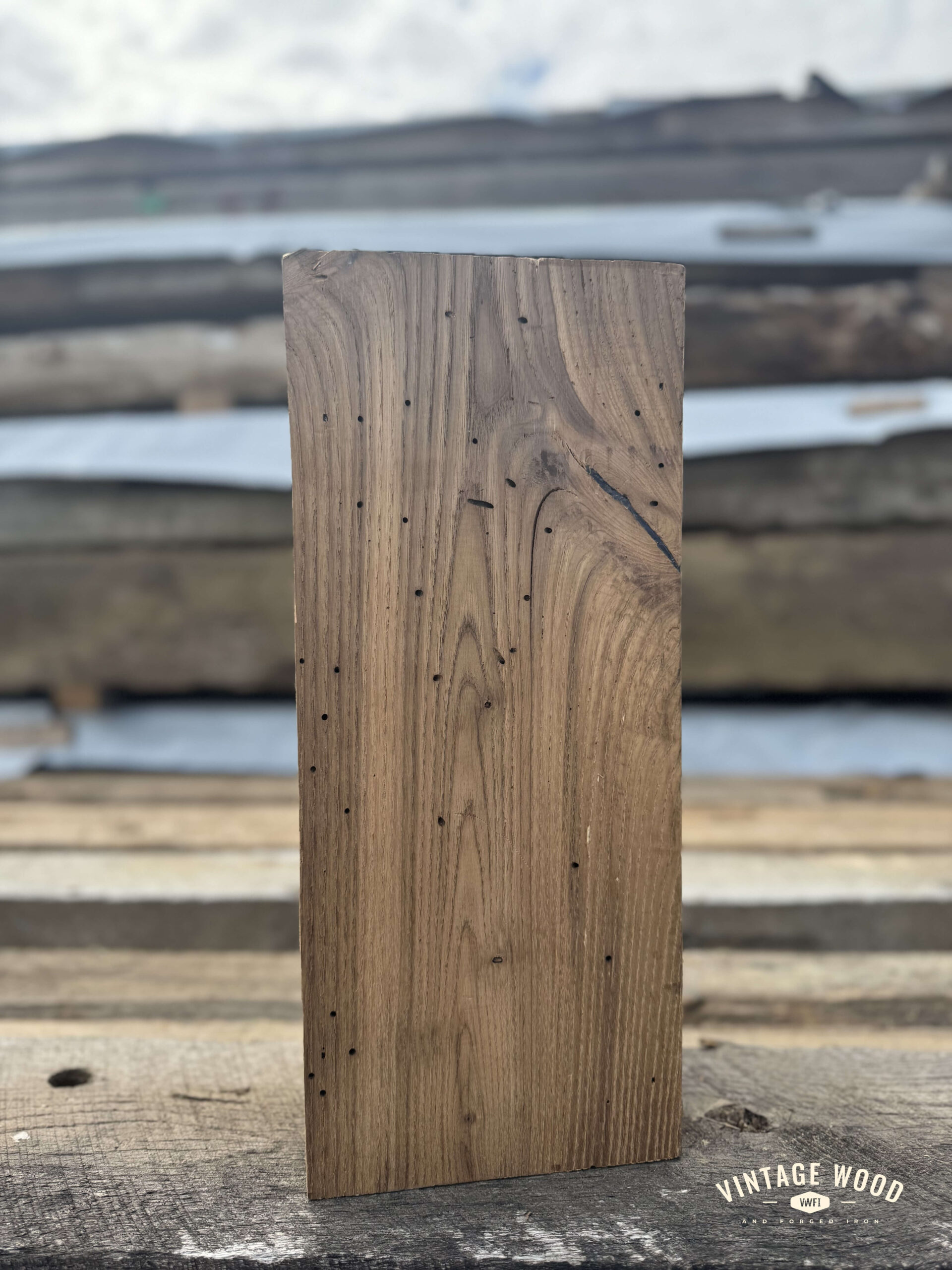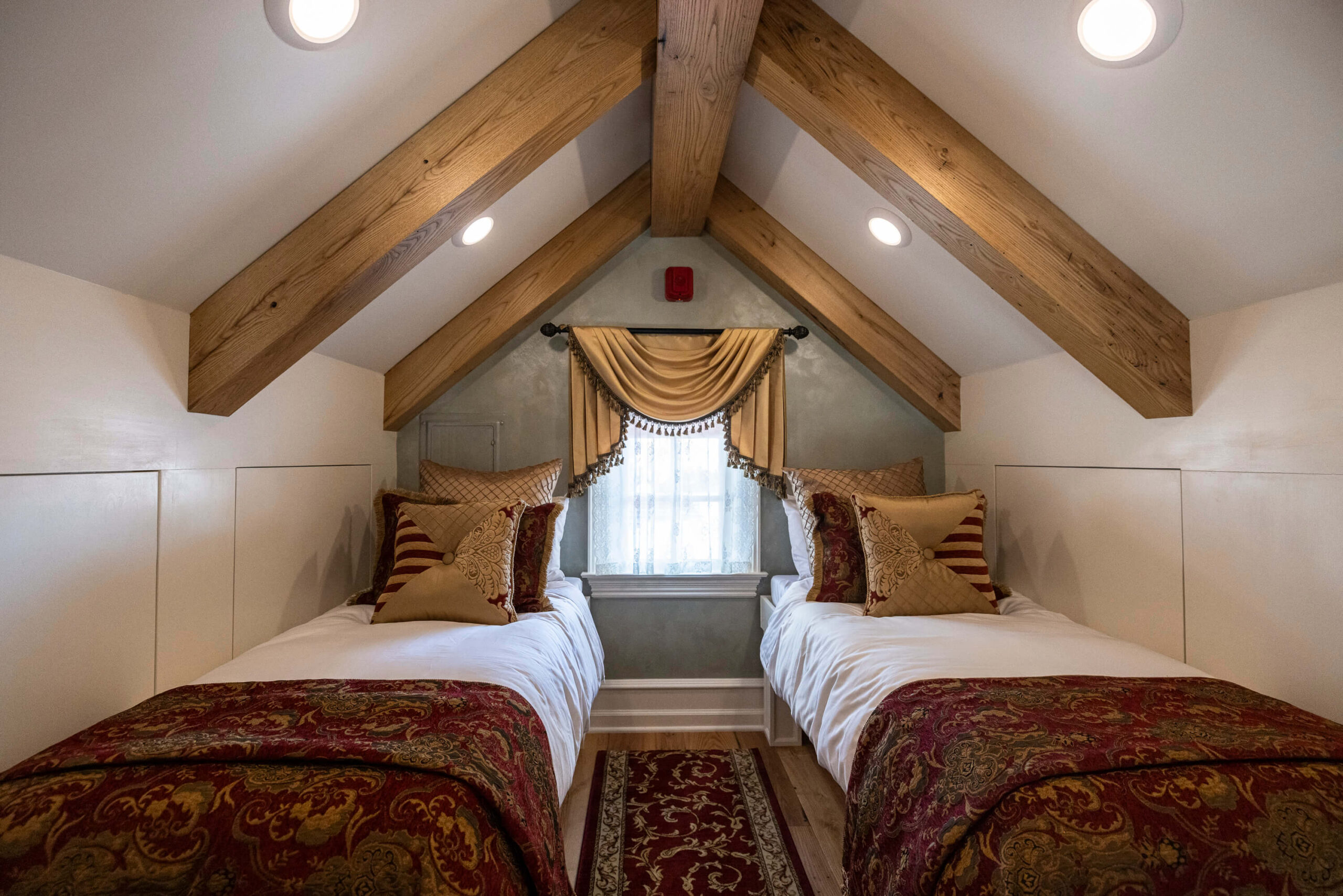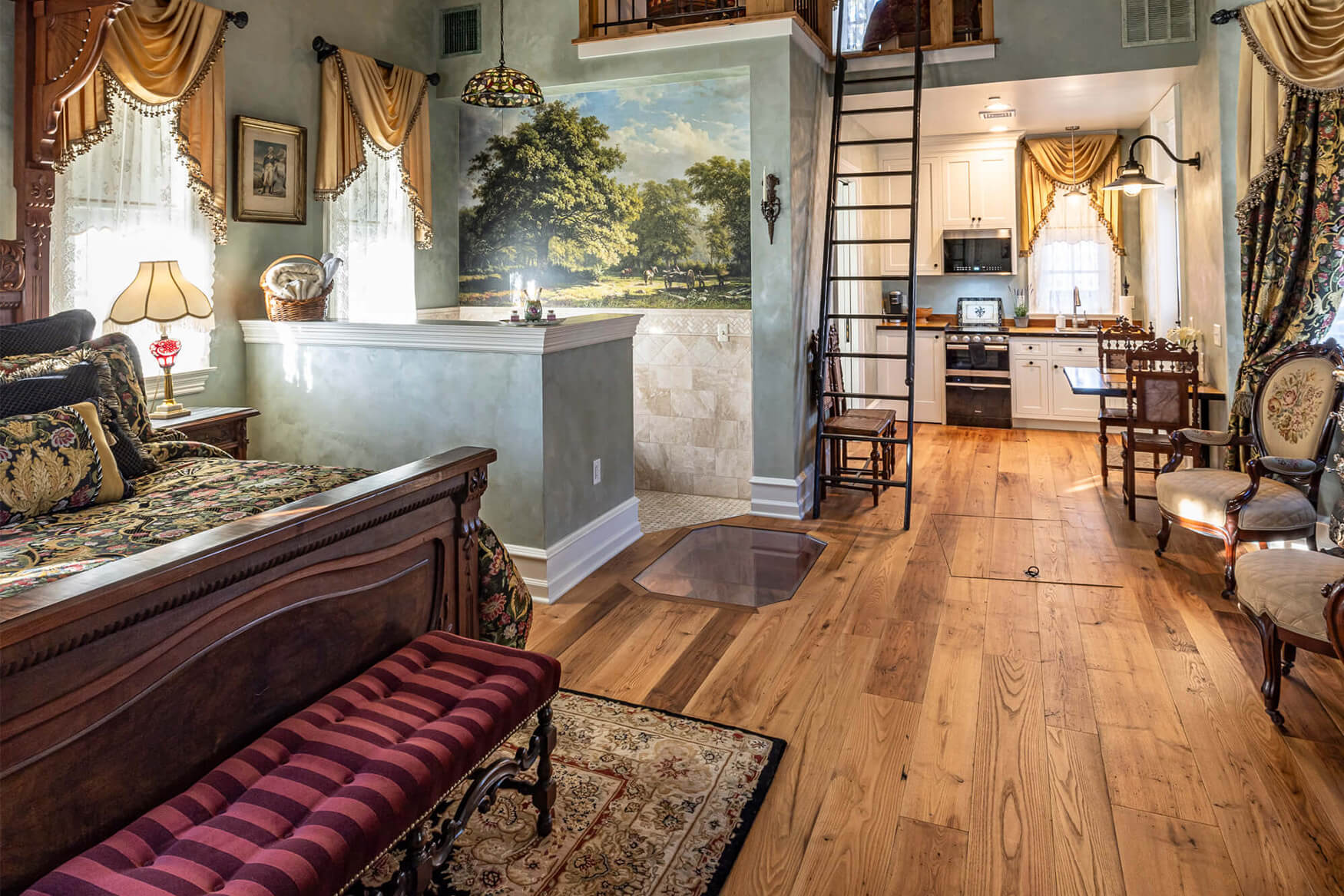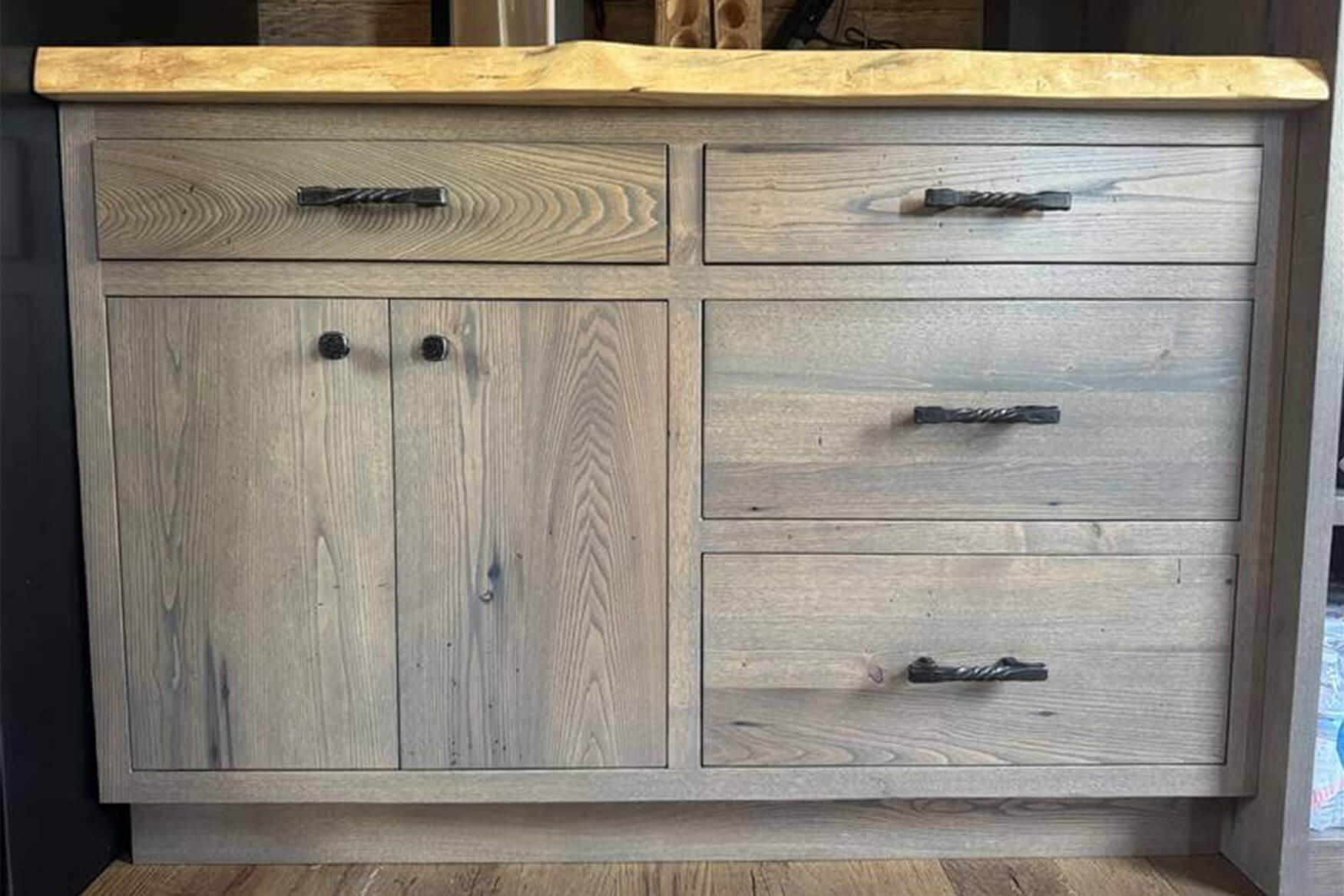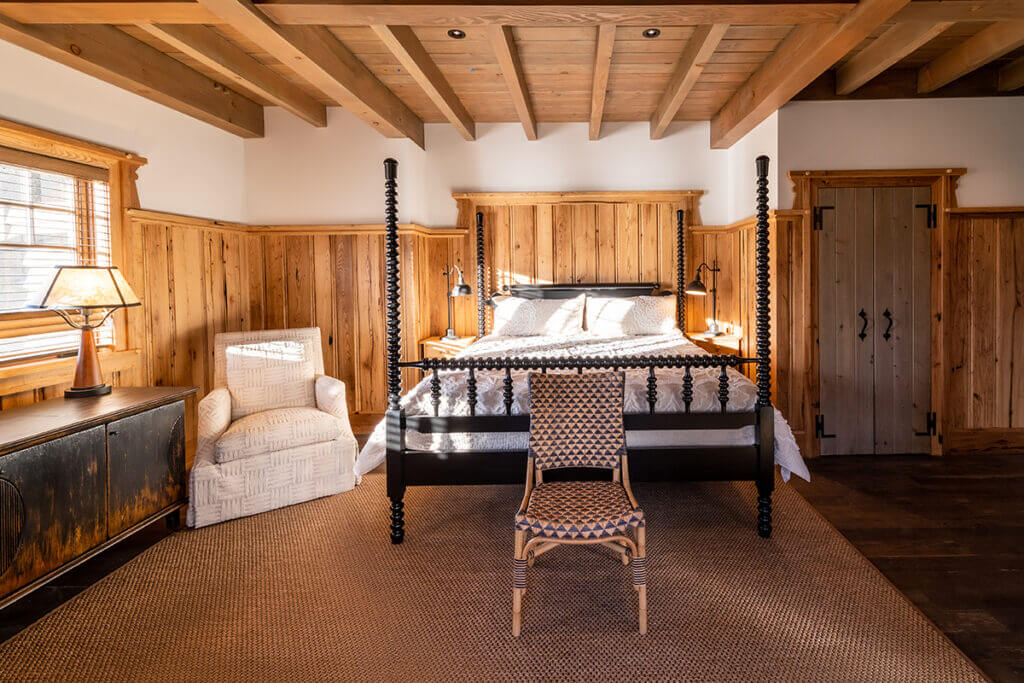Every wood species has a story, but nothing captures the heart quite like American chestnut. From making up around 25% of the forests in the eastern United States to becoming “functionally extinct,” it’s a wood that’s beautiful, unique, and full of history. Discover the tragic backstory of American chestnut wood, and why we love working with it today.
American Chestnut Tree: Blight History
For years, American chestnuts dominated the eastern United States. Totalling almost four billion, they were some of the tallest and fastest-growing species in the forest and a staple in the ecosystem.
Then the chestnut blight fungus came along.
In the early 1900s, an invasive fungus (Cryphonectria parasitica) devastated the American chestnut population, wiping out billions of trees across the East Coast. By the 1950s, nearly all mature American chestnut trees were reduced to stumps.
As a result, there hasn’t been new American chestnut wood sold in the U.S. for decades, making it a rare and valuable material to build with.
Where to Buy American Chestnut Wood?
So if all the trees were wiped out and no new lumber is available, how do you get American chestnut wood?
By reclaiming it.
The wood is extremely rare and only found in old structures like barns, homes, and fences that were built before the blight.
There are many foundations working to create blight-resistant trees, so the American chestnut population can return to its former glory. But as of now, the wood is still extremely limited in availability, and most chestnut lumber that is sold is reclaimed.
Here at Vintage Wood & Forged Iron, we have reclaimed American chestnut wood for sale at our lot in Lancaster County, PA. From flooring to furniture, we can provide the materials you need to add character, history, and beauty to your space. Drop by or contact us, tell us about your idea, and we’ll help you find the perfect reclaimed piece.
Qualities of American Chestnut Wood
Now that we’ve covered the chestnut tree blight history, let’s analyze the wood itself.
American chestnut is a hardwood with a rustic appearance. Many of the trees impacted in the blight were then infested by insects before they were milled into lumber. This created a subset of the wood called wormy chestnut. This lumber features wormholes and discoloration, and is a popular choice when you want a more natural, unfinished look for your project.
Whether you’re looking at standard American chestnut or wormy chestnut, they have many characteristics in common.
- Color — The heartwood (inner core) of an American chestnut tree is light to medium brown. As it ages, it darkens and turns a reddish hue. The outer layer (the sapwood), is lighter brown and narrow.
- Grain Pattern — American chestnut wood grain is open and straight to spiral, sometimes interlocked. It’s similar to oak, but with fewer rays.
- Texture — This lumber has an uneven, coarse texture that gives it character.
- Unique Characteristics — Wormholes, nail holes, discoloration, and other elements are often present in reclaimed American chestnut wood.
- End Grain — Chestnuts are ring-porous trees, meaning they have rows of large pores at the start of each growth ring, giving the end grain a distinctive look.
- Weight — American chestnut is lightweight.
- Hardness — Chestnut has a hardness of 540 pounds of force on the Janka scale, making it a strong wood for its weight.
Many people confuse oak and chestnut wood since they have similar warm brown tones. However, chestnut doesn’t have the prominent rays that you see with oak, and it’s more lightweight. It’s also not as strong. White oak boasts an impressive 1,350 pounds of force on the Janka scale, with chestnut only reaching 540.
Benefits of American Chestnut Wood
If American chestnut lumber is hard to get and not as strong as other varieties, why would you pick it? Here are some of the major benefits of this wood, and why we recommend it to clients every single day.
#1. It’s Rare
After billions of chestnut trees were wiped out, the wood became extremely rare. Now it’s only available as reclaimed lumber. This scarcity makes reclaimed American chestnut wood a valuable choice for your next project. Not many people have access to it, and it will be a unique addition to your home or commercial space.
#2. It’s Historic
With every piece of reclaimed chestnut wood, you know you’re holding a piece of history in your hands. This lumber has a rustic look, especially wormy chestnut, and is perfect for spaces where you want a natural feel.
#3. It’s Sustainable
Unlike other wood species, current American chestnut is almost always reclaimed. This means we don’t have to cut down trees to get the lumber. Instead, we recycle it from old, run-down structures and give it new life, so the material doesn’t end up in a landfill.
#4. It’s Rot-Resistant
This wood is naturally rot-resistant and extremely durable, so it doesn’t need to be pressure-treated before it’s installed. Chestnut heartwood is high in tannic acid, which is why it can withstand rot, weathering, and insect damage. This makes it great for outdoor use or as building materials.
But wait, you may be wondering, isn’t chestnut known for its wormholes? It’s true! Most reclaimed chestnut wood is filled with them. This is because tannic acid only protects trees while they are living. Once the blight kills them, worms and other insects pack their bags and move right in.
#5. It’s Easy to Work With
Since chestnut lumber is lightweight, it’s pretty easy to work with. It stains and finishes well and is easy to glue, sand, and cut. However, it does split easily, so be careful when nailing or screwing into the wood.
Ways VWFI Uses Reclaimed American Chestnut Wood
Historically, American chestnut lumber has been used for barns, homes, utility poles, shingles, and other outdoor construction needs. But nowadays, reclaimed wood can be used for anything! If you’re planning a new project and want to use some of this historic material, here are our favorite ideas to incorporate it into your home or commercial space.
Beams
Add a piece of history to your space through box beams! We can create these out of any wood species to hide unattractive elements on your walls or ceilings, or to place somewhere a full beam is just too heavy. American chestnut would add a rustic element to elevate your space.
Flooring
A hardwood floor can take any room from average to exceptional. With American chestnut planks, you’ll have a warm brown color rich in history and character.
Cabinetry
Upgrade your kitchen and transform it into a country paradise. American chestnut cabinets will bring a warmth to your home that feels natural and welcoming.
Paneling or Decorative Trim
Even small accents and accessories can benefit from American chestnut lumber. Use it as paneling or trim along your walls for pops of rustic detail. Trust us, your family, guests, or clients will feel the difference.
You can use our American chestnut wood for sale in so many different ways. Check out our gallery to see how.

